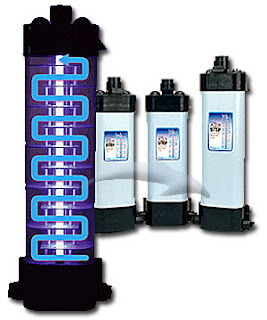 Having an aquarium is very rewarding, enjoyable experience. There are so many different species of fish, aquariums, fill and where you can fully customize your own aquarium for you. The fish are fun to watch, and the sweet water runoff adds a wonderfully natural ambience to any room. They may, however, be a great responsibility, and some are much higher maintenance than others. Those who are new to the holding of a need to carefully select their fish. Different species have specific requirements for size aquarium, cleaning requirements, temperature, and eat different foods. When selecting fish for beginners, it's a good idea to look for those who do not need a huge reservoir, have low maintenance cleaning requirements, and are generally hardy. Here are some choices that are ideal for beginners and offers lots of fun.
Having an aquarium is very rewarding, enjoyable experience. There are so many different species of fish, aquariums, fill and where you can fully customize your own aquarium for you. The fish are fun to watch, and the sweet water runoff adds a wonderfully natural ambience to any room. They may, however, be a great responsibility, and some are much higher maintenance than others. Those who are new to the holding of a need to carefully select their fish. Different species have specific requirements for size aquarium, cleaning requirements, temperature, and eat different foods. When selecting fish for beginners, it's a good idea to look for those who do not need a huge reservoir, have low maintenance cleaning requirements, and are generally hardy. Here are some choices that are ideal for beginners and offers lots of fun. One of the funnest and easier to keep the fish is called the White Cloud Mountain Minnow. This species is ideal for beginners because they are extremely robust, and eat almost any type of food. They are best suited to the water temperature between 55-75 F, if they are most comfortable in the water can not be below 65 degrees. It is best to remember that the white clouds are schooling fish, and they must be kept in schools of 3 or more. In fact, a small school (4-5 fish) can be kept in a small aquarium four gallons. They are also very clean, meaning that their continued good health and clean water is extremely easy! White clouds are also fun to watch, as they are extremely fast swimmers that love to zip around a pool and play with each other.
Bettas, or fish fight against the Siamese as they are commonly known, are also interesting for new aquarium enthusiasts. These fish have a reputation for being extremely easy to maintain, and although it is strongly recommended, they are not even need a filter. They are clean and only need cleaning usual amounts for their aquarium, and can be remarkably preserved in small tanks. Bettas are larger, colorful fish, and many are for decorative purposes. There is much debate about how a small aquarium Betta should be kept in humanity, but it is a fact they live longer than in aquaria are smaller. A good size for a single tank Betta is about 2 to 5 gallons. It should also be noted that Betta are known for their aggressive personalities - sometimes they are not great with other fish, and men can not be kept in the same without trying to kill each other. Bettas require warmer water.
One of the most popular fish on the whole, Corydoras Catfish happen to be wonderful for beginners. These fish are among the most sociable and friendly kind you can put in your tank, and love to be in schools with each other and other fish species. They grow about a year and a half inches long, making them perfect for aquariums of all sizes. He will need a heater, as Corys need water time between sixty-two and eighty-two degrees. Corys food is very simple, like most of the time they will search the bottom and feeding the remains of food from other fish. It is a good idea, however, to supplement their diet with a tropical snack time to time, and food stuff like algae wafers may actually be a fun experience. In addition to a heater, your aquarium should be about 10 gallons for a school for three or four.
These fish are easy and fun for those who seek to launch their first aquarium. The choice between one of them is only a matter of specifications and personal taste, and each has its own personality and charm. They are also robust and forgiveness, and you can find much information on them quite easily. Remember that when you're looking to start an aquarium to find what is right for you, and choose fish that work best in this environment.










.jpg)







